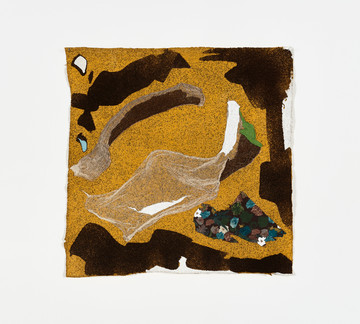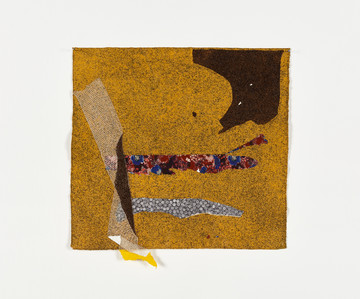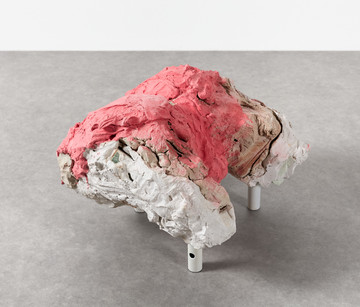Piero Manai

Piero Manai (Bologna, 1951 – 1988) gained immediate notice in the early 1970s in Bolognese circles thanks to a kind of painting that “blends hyperrealism and conceptual abstraction,” “always somehow depicting the idea of painting itself.”
In that period Manai, just into his twenties, fell ill, and it took a number of years for him to recover. This tragic experience brought about a drastic change in his way of painting and in his subjects, in the early 1980s, which became more convulsive and dramatic.
He had an almost obsessive need to draw or paint heads, nearly always deprived of most of their physiognomic features. The heads have a self- contained physical quality, blind and deaf (as underscored by some of the titles, Deaf Figure or Blind Painter), pensive and isolated inside their own weight, lost in a white space lacking in coordinates.
Lacking expression or psychology, almost coming apart, they are neither representations nor portraits. They are perhaps more precisely self-portraits, and they are not seen from outside, but from inside.
Manai’s heads often bear weights, stones, figures that burden the body under their heft. “They are men with weights on their heads,” as he defined them. The heads and bodies often degenerate into volumes whose form is like that of a rock, a large stone, a monolith.
His pictorial language does not seem related to any of the various artistic practices current at the time, from Austrian-German Expressionism of the 1980s to the more Italian Transavanguardia, just to indicate two of them. In fact, in its diversity it seems to reunite them all, so much so that it is hard to find a (probably useless) way of classifying the work.
Manai showed in various galleries in Italy, and abroad at PS1 in New York (1982). He took part in the exhibitions Nuova Immagine at the Milan Triennale (1980), Linee della ricerca artistica italiana 1960-80 at Palazzo delle Esposizioni in Rome (1981), Italian Art 1960-80 at the Hayward Gallery in London (1982), the Biennale des Jeunes in Paris (1982), and showed work at the Kunstverein in Hannover (1985) and Frankfurt (1986).
Francis Offman
The works of Francis Offman are canvases (not mounted on stretchers) with irregular contours, paintings that come from the associations of parts (or portions) of vivid, flat, uniform colors, and collage zones made with the insertion of scraps of paper – thin or thicker sheets, salvaged from bread wrappers or shoeboxes – the enter the composition like rips or wounds. An encounter that only on occasion makes elements emerge that can be traced back to the real: a dry tree, a mountain, a portion of water, earth or sky…
Offman’s pieces are free compositions that imply fragile references, minimal and understated, to a faraway world (Africa and Rwanda, where the artist spent some of his childhood) and its customs, a traumatic memory and an uncertain identity; jagged, dynamic spaces that cannot give rise to an integral landscape.
Davide Ferri

Monika Stricker

Monika Stricker (1978, Düsserldorf, DE- lives and works in Brussels, Belgium, BE) studied at the Kunstakademie in Düsseldorf and continued her education during her Wiels residency in Brussels.
Surrounded by a sensitive and intimate atmosphere the exposed body parts provide a rare viewpoint of male nudity. A revelation of man’s groin area. Either molded from soft clay or plaster the sculptures carry the traces of the molding process. At first sight, the green and black ceramics resemble a rock-like formation, their surfaces are shimmering differently in light. These works exude an intense and fascinating sensuality that makes the disclosed body regions shine.
Monika Stricker












